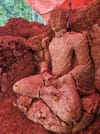- Professor Danny Hilman Natawidjaja claims that Gunung Padang is not a natural hill but a man-made pyramid, potentially older than 20,000 years
- Using advanced geological tools, Hilman’s team uncovered deep underground structures and obtained radiocarbon dates suggesting construction phases as far back as the Upper Paleolithic era.
- Despite skepticism and pushback from mainstream academia, Hilman stands by his findings, asserting that Gunung Padang’s precise stonework, seismic design, and possible astronomical alignments point to a lost advanced civilisation.
Professor Danny Hilman talks about his battle to rewrite history at Gunung Padang. In this Part 1 of his interview, he shares the secrets beneath the “mountain”.
By Sebastian Lim
HIGH IN THE misty hills of West Java lies a mound of earth and stone that, for centuries, was dismissed as just another natural formation. But according to one man, it hides something extraordinary. Professor Danny Hilman Natawidjaja, a senior geologist and seismologist at Indonesia’s National Research and Innovation Agency (BRIN), believes Gunung Padang is no mere hill — but the ruins of a pyramid older than any known civilisation. If he’s right, history itself may need to be rewritten. If he’s wrong, he risks becoming an outcast in the academic world. This is no ordinary archaeological dig. This is a contest of ideas, of evidence versus orthodoxy, of belief versus skepticism.
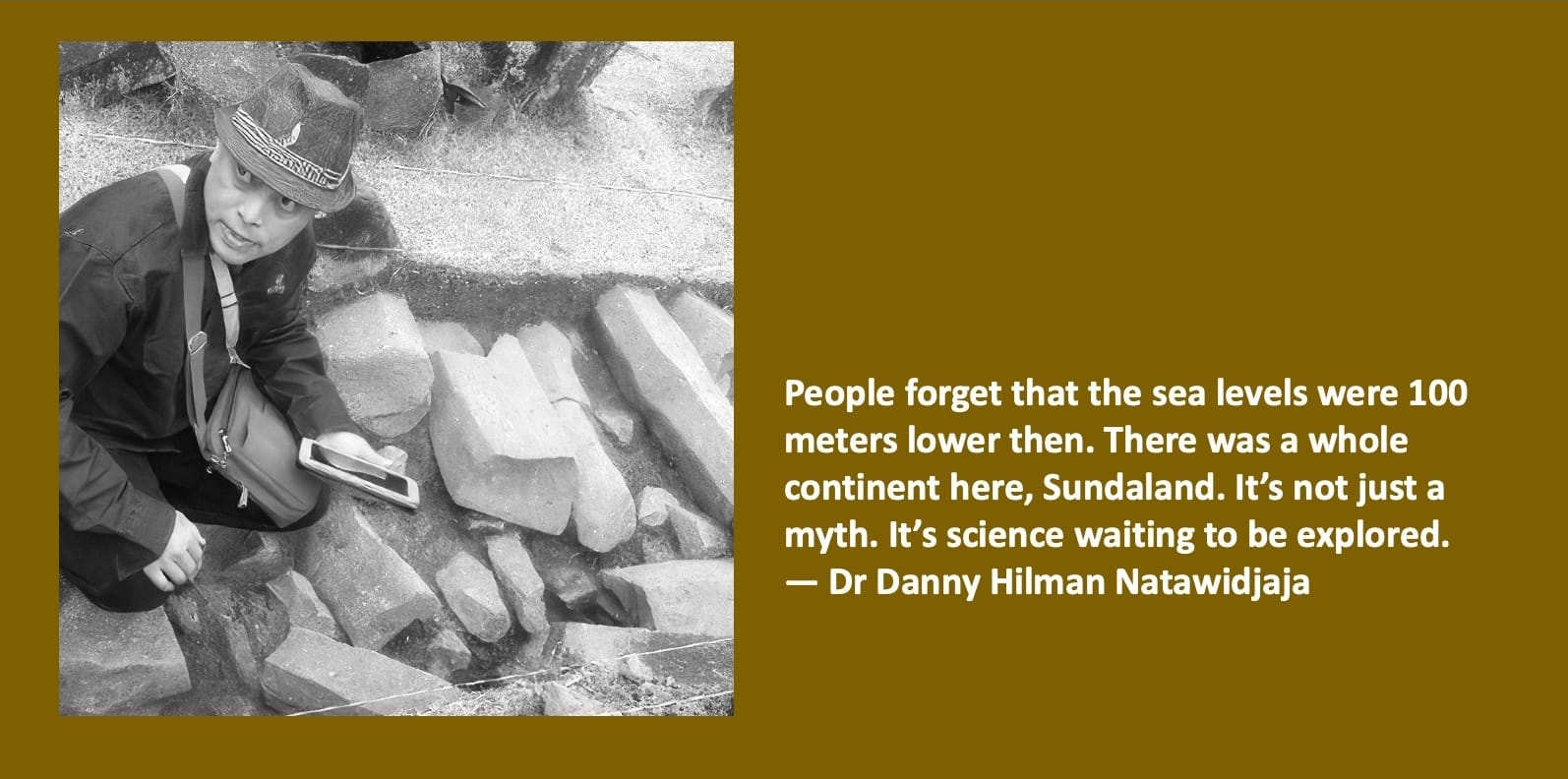
From afar, Gunung Padang rises like a sentinel from the mist — an ancient megalithic site nestled among lush green hills. It appears as a modest hill, but closer inspection reveals a breathtaking terrace of massive stone blocks meticulously arranged in patterns that have perplexed locals and scientists alike. For decades, this site was thought to be little more than a prehistoric ritual place built by early agrarian societies. But Hilman believes it is something far more profound.
“Gunung Padang is not just a hill,” Hilman says. “It is a man-made pyramid — an ancient monument built thousands of years before the Egyptian pyramids.” Such a claim would shake the foundations of archaeological orthodoxy. And indeed, it has.
Hilman first encountered Gunung Padang in the early 2000s. Local legends had long whispered of a sacred place imbued with spiritual power, a site where ancient kings and sages once meditated. But for Hilman, it was not the myths but the ground beneath that stirred his curiosity. Armed with ground-penetrating radar (GPR), electrical resistivity tomography (ERT), and core drilling tools, he led a team of scientists to uncover what lay hidden beneath the surface.
Astonishing findings
Geophysical surveys revealed layers upon layers of stone structures buried beneath the visible surface — some extending as deep as 30 meters. Radiocarbon dating from organic material retrieved during the core drilling process shown dates ranging from 5,000 to more than 20,000 years old. If verified, this would place the deepest construction layers in the Upper Paleolithic era, a time when human societies were thought to be composed only of nomadic hunter-gatherers.
“I couldn’t believe the results at first,” Hilman admits. “We checked and rechecked the data. We even brought in independent labs. But the numbers were consistent.”
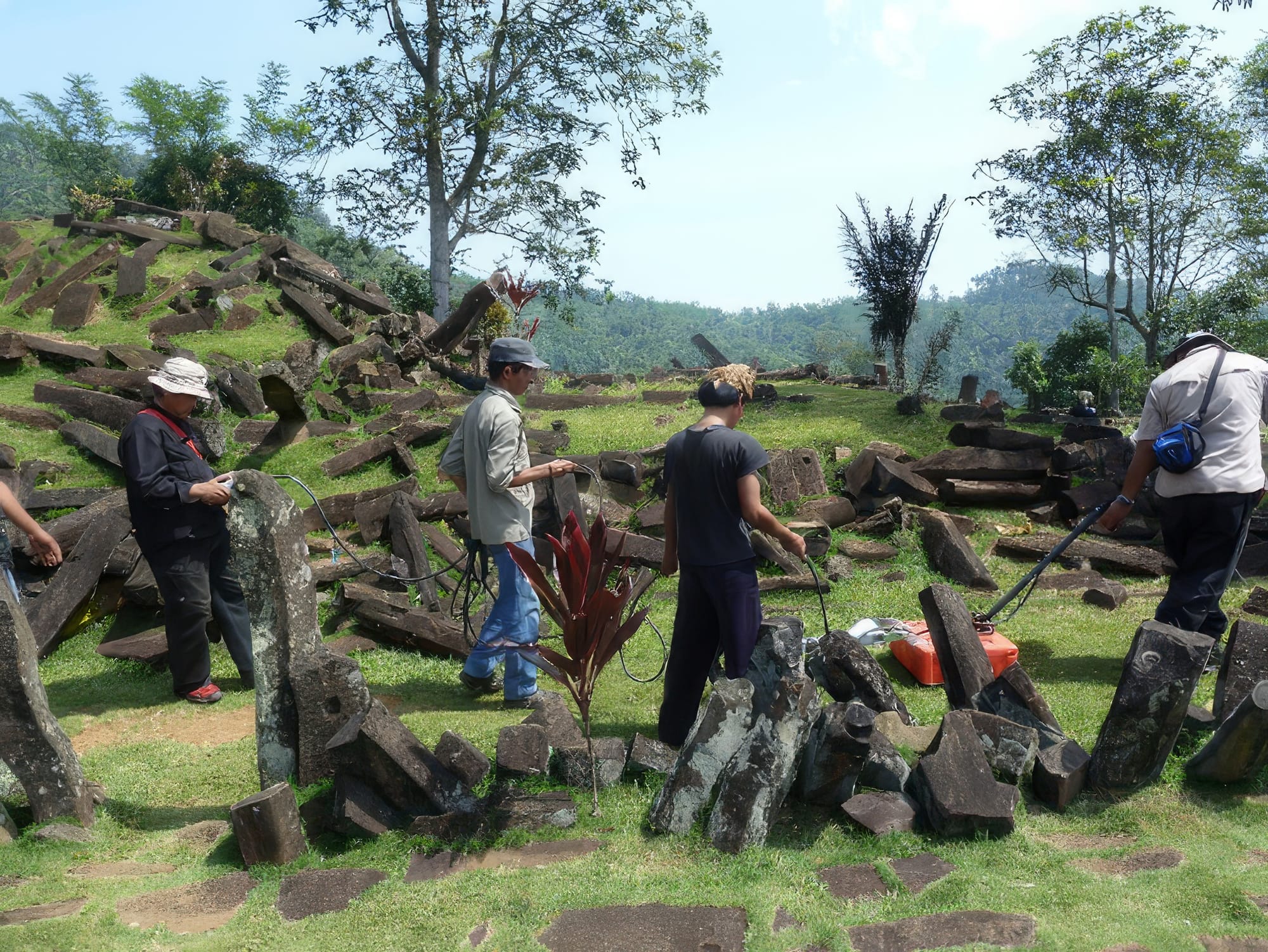
If true, Gunung Padang challenges not just the regional narrative of Indonesian history, but the global story of human civilisation. Mainstream archaeology asserts that large-scale construction projects and complex societies emerged only around 5,000 to 6,000 years ago, in Mesopotamia, Egypt, and the Indus Valley. The idea that a prehistoric society could have mobilised the manpower, tools, and knowledge to construct such an intricate monument during the Ice Age is revolutionary — and, predictably, controversial.
Critics have accused Hilman of overinterpreting geological anomalies, and some archaeologists argue that the deeper structures could be natural formations. But Hilman remains unfazed. “We’re not guessing,” he says. “We are scientists. We follow the data.”
He points to the precision-cut stone blocks and their alignment with cardinal directions as evidence of deliberate design. Many of the stones are andesite columns — dense, heavy, and difficult to shape — yet they are arranged in neat rows, terraces, and platforms, often interlocked in ways that suggest a knowledge of geometry and seismic resistance.
And that is no accident. Indonesia, after all, lies on the volatile Pacific Ring of Fire, where earthquakes and volcanic eruptions are frequent. Hilman believes the builders of Gunung Padang were aware of this. “It’s a resilient design,” he says. “One that has stood for tens of thousands of years.”
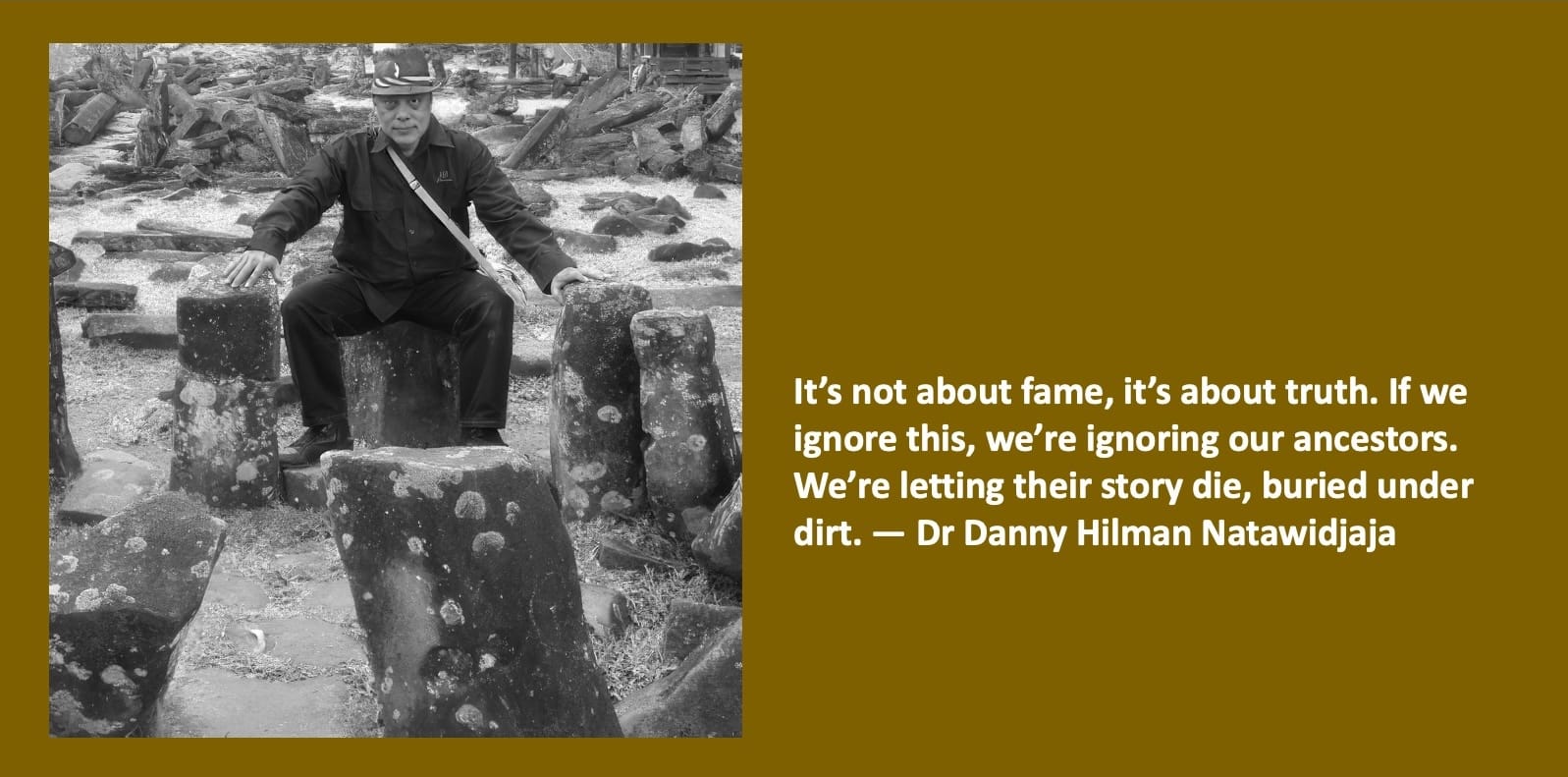
His theory suggests that Gunung Padang was built in several phases, starting with the deepest core structure — likely a pyramid made from hardened lava rock — and later modified with stonework on the upper terraces. He also posits that the site could have had ceremonial or astronomical significance, possibly even functioning as a knowledge centre or observatory.
In 2014, Hilman’s claims gained national attention when then-president Susilo Bambang Yudhoyono visited the site and supported further research. However, funding and political support have wavered over the years, especially under criticism from established academic circles who viewed the work as speculative or fringe science. Excavations were paused and restarted multiple times.
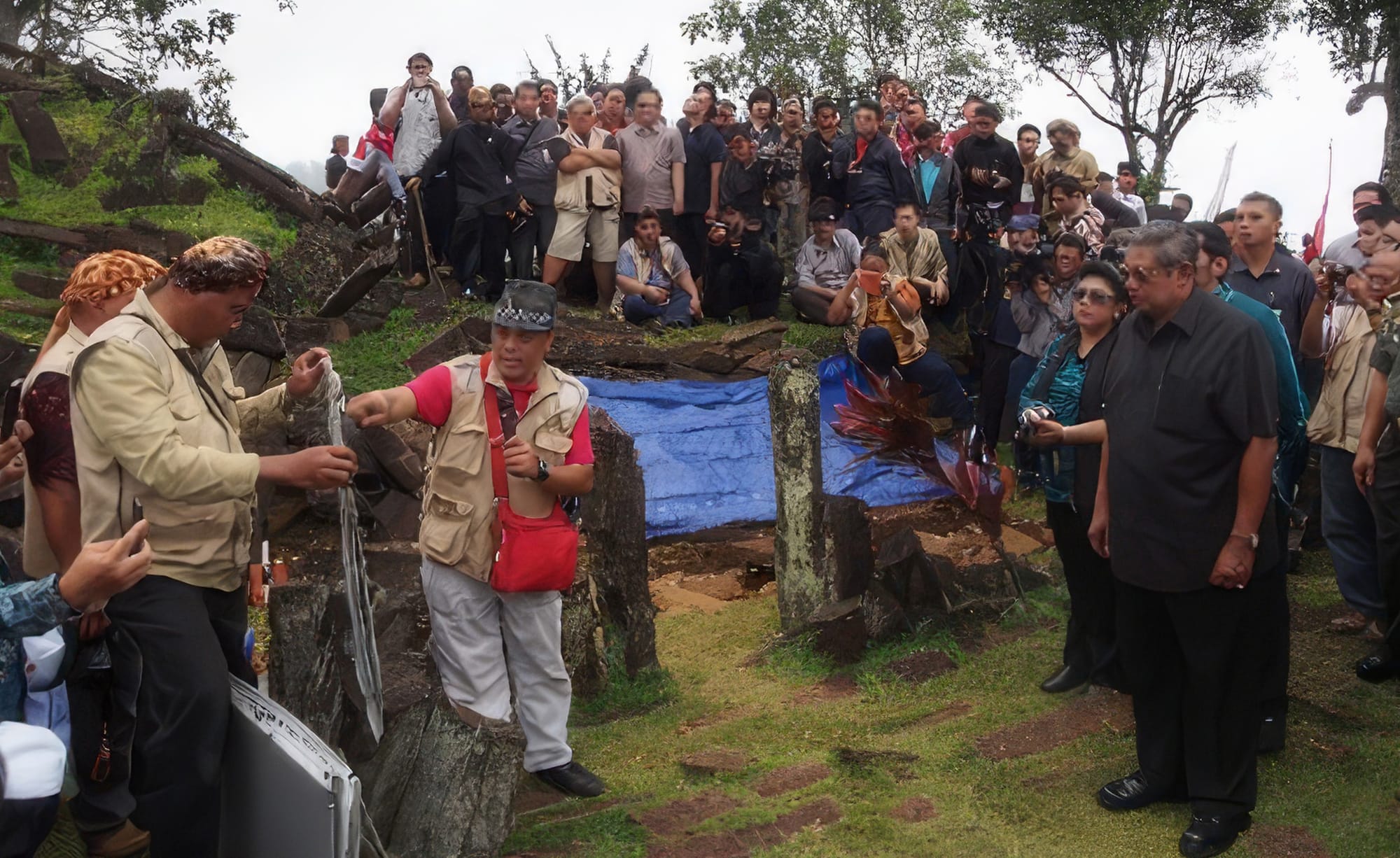
Despite the hurdles, Hilman remains doggedly committed. “This isn’t just about me,” he says. “It’s about rewriting human history — our history.” For him, Gunung Padang may be the smoking gun that proves advanced civilisations existed long before we imagined. Perhaps they were wiped out in cataclysms, like the dramatic sea level rise at the end of the last Ice Age. Perhaps we are only now starting to remember what was once forgotten.
As he walks along the moss-covered stones, Hilman looks at the horizon, where modern villages blend into the ancient landscape. “We are standing on a mystery,” he says. “And it’s our duty to uncover it.”
To many, Gunung Padang is still an enigma. But to Dr Danny Hilman Natawidjaja, it is a message from a forgotten world — written in stone, buried beneath time, and finally found a way to begin to speak.
Read PART TWO: Reckoning for our forgotten past at Gunung Padang. Click here
Hilman’s theory is as much about belief as it is about science. He believes an advanced pre-agricultural civilisation may have once thrived in Sundaland — what is now Southeast Asia — before being wiped out by a cataclysmic event, possibly the end of the last Ice Age.




